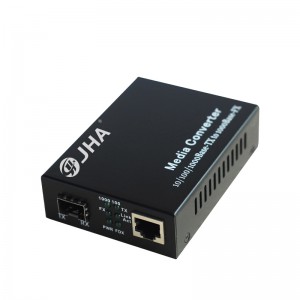In the field of communication networks, we often use fiber optic transceivers and protocol converters, but friends who don’t know much about them may confuse the two. So, what is the difference between fiber optic transceivers and protocol converters?
The concept of fiber optic transceivers:
Fiber optic transceiver is an Ethernet transmission media conversion unit that exchanges short-distance twisted-pair electrical signals and long-distance optical signals. It is also called a photoelectric converter (FiberConverter) in many places. Products are generally used in actual network environments where Ethernet cables cannot be covered and optical fibers must be used to extend the transmission distance, and are usually positioned in the access layer applications of broadband metropolitan area networks; such as: high-definition video image transmission for surveillance security projects; It has also played a huge role in helping to connect the last mile of fiber optic lines to the metropolitan area network and the outer network.
The concept of protocol converter:
Protocol converter is abbreviated as co-transfer, or interface converter, which enables hosts on the communication network that use different high-level protocols to still cooperate with each other to complete various distributed applications. It works at the transport layer or higher. The interface protocol converter can generally be completed with an ASIC chip, with low cost and small size. It can convert between the Ethernet or V.35 data interface of the IEEE802.3 protocol and the 2M interface of the standard G.703 protocol. It can also be converted between 232/485/422 serial port and E1, CAN interface and 2M interface.
Summary: Fiber optic transceivers are only used for photoelectric signal conversion, while protocol converters are used to convert one protocol to another. The optical fiber transceiver is a physical layer device, which converts optical fiber into twisted pair, with 10/100/1000M conversion; there are many kinds of protocol converters, most of which are basically 2-layer devices.
Post time: Jul-07-2021







